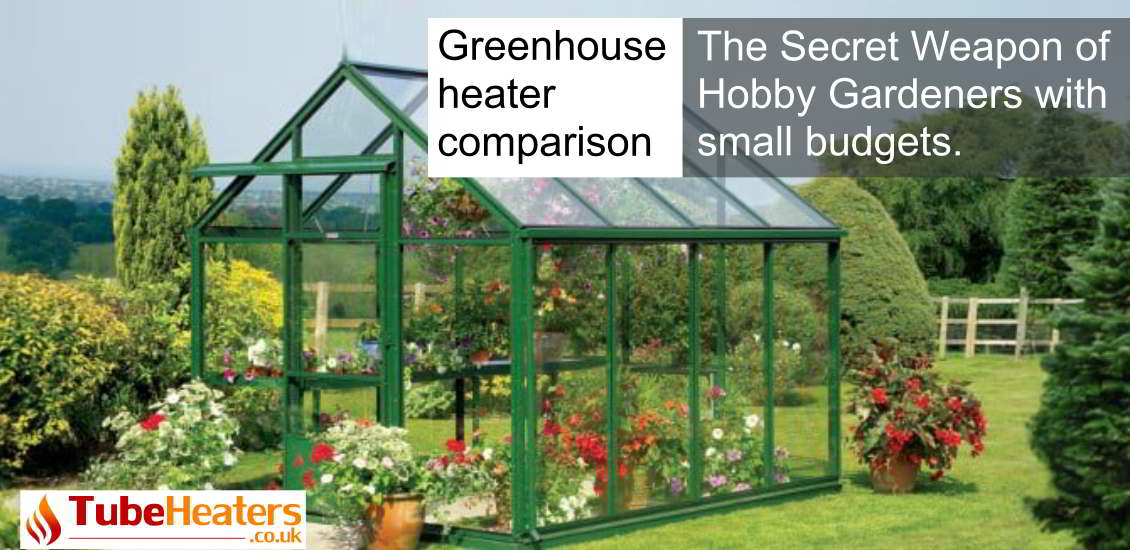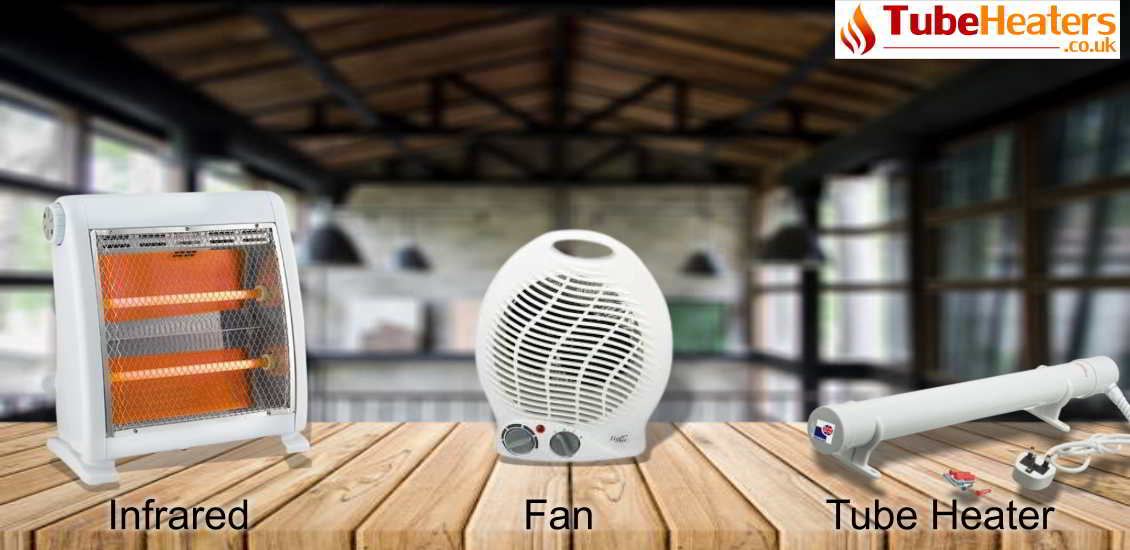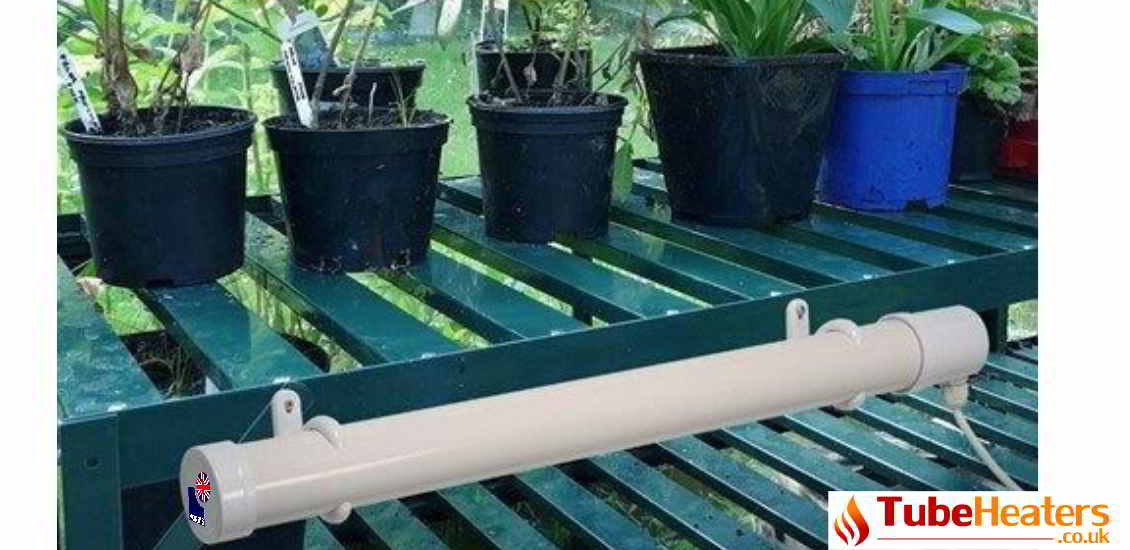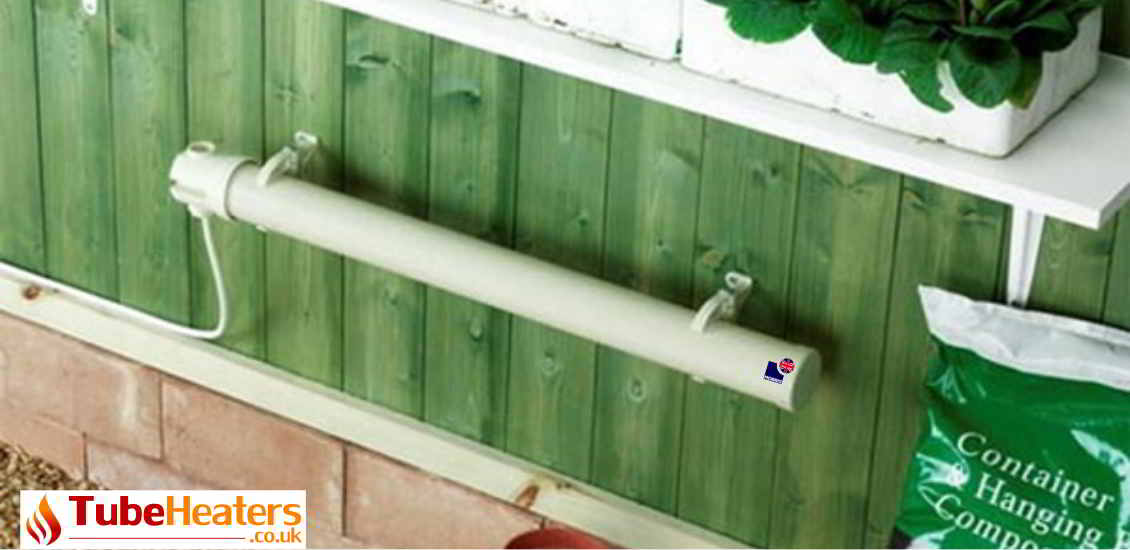
As a passionate hobby gardener, you know that the key to maximising your harvest and nurturing thriving plants lies in creating the perfect environment. However, for many of us, the prospect of heating a greenhouse can seem intimidating, especially due to the perceived cost. What if I told you that the world of greenhouse heaters contains a secret weapon that can maximise your greenhouse's potential without breaking the bank?
Forget the expensive, high-maintenance options that might drain your resources and leave your wallet feeling a little lighter. We'll explore a variety of fuel-based, electric, and even passive greenhouse heater options as we dive into the fascinating world of affordable greenhouse heating. These options will keep your plants happy and warm without breaking the bank.
The target of this article is to cover the hobby gardeners and greenhouse owners with small budgets.
Let's embark on this journey together, uncovering the secrets of efficient heating and discovering how to transform your greenhouse into a haven of flourishing greenery, regardless of your budget limitations.
1. Electric Heating Systems
Electric heaters are relatively easy to install and operate. They come in various forms, such as radiant heaters, fan-forced heaters, or heat mats.
The running costs of electric heating can be higher compared to other options, primarily due to the cost of electricity. However, the overall efficiency and cost-effectiveness can vary depending on the specific heater's energy efficiency rating.
It's worth considering the insulation of your greenhouse to minimise heat loss and maximise the efficiency of electric heaters.
Pros:
● No need for gas lines or boilers
● Easy to install and operate
● Some options have targeted heating capabilities
Cons:
● Generally higher running costs than fuel-based systems
● Can dry out the air
● May require additional wiring or circuit upgrades
Examples:
Fan Heaters: Affordable and easy to install, but high running costs.
Tube Heaters: Low purchase cost and targeted heating, but high running cost and limited heat distribution.
Infrared Heaters: Efficient and targeted heating, but the highest running cost among electric options.
1.1. Fan Heaters
Electric fan-forced heaters use a fan to distribute warm air throughout the greenhouse. They are often wall-mounted or suspended from the ceiling.
These heaters work by passing air over heating elements and then blowing the warm air into the greenhouse space.
Electric fan-forced heaters are effective for heating larger areas and ensuring even heat distribution.
Pros:
● Affordable and readily available.
● Easy to install and operate.
● Provide good air circulation, preventing stagnant air and mould growth.
Cons:
● High running costs compared to other electric options.
● Can dry out the air, requiring additional humidification.
● May not distribute heat evenly, creating hot and cold spots.
1.2. Tube Heaters
Tube heaters, also known as tubular heaters or greenhouse tube heaters, are electric heaters that consist of long tubes or elements.
These heaters are typically mounted horizontally along the length of the greenhouse, near the plants.
Tube heaters emit radiant heat and warm the surrounding air. They are effective for maintaining a stable temperature in the greenhouse.
Pros:
● Low purchase cost, making them budget-friendly.
● Lightweight and portable, easy to move around the greenhouse.
● Provide targeted heating for specific areas or plants.
Cons:
● Limited heat distribution, unsuitable for large greenhouses or uniform heating.
● Can dry out the air in the vicinity of the heater.
1.3. Infrared Heaters
Infrared heaters are an efficient way to keep your greenhouse warm. They warm objects directly, including plants and the soil, creating an ideal environment for growth. This method eliminates drafts and saves energy compared to traditional heating, making it a popular choice for budget-conscious gardeners.
Pros:
● Efficient heating technology with minimal heat loss.
● Provides direct heat to plants, similar to sunlight.
● Available in various sizes and mounting options.
Cons:
● Highest running costs among electric options.
● Requires accurate positioning to avoid hot spots.
● May not be suitable for taller plants due to uneven heat distribution.

2. Fuel-Based Systems
Pros:
● Often the lowest running cost option
● Efficient heat distribution
● Readily available in many areas
Cons:
● Requires installation of gas lines and boilers (except for propane)
● Can be noisy and emit pollutants
● Prices can fluctuate based on market conditions
Examples:
Natural Gas: Ideal for large greenhouses with stable gas prices.
Propane: Portable and flexible option, but slightly higher running costs.
Oil: Least efficient and highest emissions, not recommended for most hobbyists.
2.1. Natural Gas
It's essential to ensure proper ventilation when using gas or oil heaters to prevent the buildup of harmful gases like carbon dioxide and carbon monoxide.
Pros:
● Highly efficient and cost-effective for large greenhouses.
● Clean-burning fuel with minimal emissions.
● Readily available in many areas.
Cons:
● Requires installation of gas lines and boilers, which can be expensive.
● Boilers can be noisy and require regular maintenance.
● Not suitable for areas without natural gas lines.
Devices:
Natural Gas Boilers: Available in various sizes and efficiencies, with features like automatic temperature control and programmable thermostats.
Heat Exchangers: Convert heat from the boiler's combustion process into hot water or air, circulated throughout the greenhouse.
Radiant Heaters: Provide targeted heating with minimal air movement, ideal for specific plant zones.
2.2. Propane
Pros:
● Portable and flexible, no need for gas lines.
● Relatively clean-burning fuel.
● Available in various tank sizes to suit different needs.
Cons:
● Slightly higher running cost than natural gas.
● Requires regular refilling or replacement of propane tanks.
● Not as readily available as natural gas in some regions.
Devices:
Propane Tank Heaters: Direct-fired heaters that burn propane directly in the greenhouse, providing immediate heat.
Propane Boilers: Similar to natural gas boilers but require a propane tank for fuel supply.
Propane Radiant Heaters: Offer targeted heating and can be mounted on walls or ceilings.
2.3. Oil
Pros:
● Widely available and relatively inexpensive.
● Fuel is easily stored on-site.
Cons:
● A least efficient option among fuel-based systems.
● Produces the most emissions, contributing to air pollution.
● Requires regular maintenance of the oil burner and furnace.
Devices:
Oil-Fired Boilers: Similar to natural gas and propane boilers but require specialised burner equipment for oil combustion.
Oil-Fired Furnaces: Direct-fired heaters that burn oil in the greenhouse, similar to oil-fired boilers but with a smaller heating capacity.
3. Other Options
3.1. Biomass Heating
Biomass heating systems utilise organic materials like wood chips, pellets, or agricultural waste as fuel. Compared to fossil fuels, they are considered a more sustainable option.
Biomass fuels are generally cheaper than gas, oil, or electricity, resulting in potentially lower running costs. However, the availability and cost of biomass fuel can vary depending on your location.
Biomass heaters require regular maintenance, including cleaning out ash and maintaining fuel storage and delivery systems.
Pros: Biomass heaters, such as wood or pellet burners, can be a sustainable heating option. Biomass fuels tend to be more affordable compared to gas, oil, or electricity, resulting in potentially lower running costs.
Cons: Biomass heaters require a constant supply of fuel, which can be bulky and require storage space. They also require regular maintenance, such as cleaning out ash and ash disposal.
3.2. Solar Heating
Solar heating systems use solar collectors to capture and store solar energy, which is then used for heating the greenhouse. They can be passive systems (e.g., solar panels) or active systems (e.g., solar air heaters or solar water heaters).
The running costs of solar heating systems are typically minimal once the initial installation costs are covered. Long-term cost savings can be achieved through the use of renewable and free solar energy.
The effectiveness of solar heating depends on the amount of sunlight available in your location. Cloudy or low-sunlight regions may not benefit as much from solar heating.
Pros: Solar heating systems utilise renewable energy, resulting in minimal running costs once the initial setup costs are covered. They are a cost-effective choice, particularly in areas with a lot of sunshine.
Cons: The upfront installation costs for solar heating systems can be high. Solar heating also heavily relies on sunlight availability, which may not be consistent in all locations or during certain seasons.
3.3. Geothermal Heating
Geothermal heating systems harness the stable temperature of the ground to provide heat. They use pipes buried underground to circulate a heat transfer fluid that absorbs heat from the ground.
Geothermal heating systems can be highly efficient and have lower running costs compared to other options. They are particularly beneficial in regions with consistent ground temperatures.
However, geothermal systems require a significant upfront investment due to drilling and groundwork. The feasibility of geothermal heating depends on the geology and suitability of your location.
Pros: Geothermal heating systems utilise the stable temperature of the ground to provide heat. They can be highly efficient and have lower running costs compared to other options once installed.
Cons: Geothermal heating systems require a significant upfront investment and may not be suitable for all geographic locations. Installation can be complex and
costly, involving drilling and groundwork.
3.4. Heat Pumps
Heat pumps extract heat from air, ground, or water sources and transfer it to the greenhouse. They can work in both heating and cooling modes.
The energy efficiency of heat pumps is well known, and they can make significant savings compared to traditional heating systems.
The running costs of heat pumps can be relatively low, but the upfront costs are higher due to the technology involved. Heat pumps may experience reduced efficiency in freezing climates.
Pros: Heat pumps can provide efficient heating by extracting heat from the air or ground. Their energy savings can be significant compared to traditional heating systems, leading to lower running costs.
Cons: Heat pumps can have higher upfront costs compared to some other options. They may also have reduced efficiency in icy climates.
4. Comparison of running costs and estimated purchase costs
To make this guide more complete we have included other greenhouse heating solutions. The remaining solutions are more recommended for larger installations and not for home greenhouses as the purchase and installation costs are quite high.
Here's a comparison of running costs and estimated purchase costs for some popular heating methods in a typical 10ft x 12ft (120 sq ft) greenhouse located in the UK (average winter temperature of -7°C):
|
Method |
Average Running Cost per Month |
Estimated Purchase Cost |
Notes |
|
£108 - £186 |
£20 - £80 |
Assumes a 100% efficient heater and an electricity price of 34p/kWh. |
|
|
Electric Fan Heaters |
£130 - £217 |
£30 - £100 |
Assumes a 100% efficient heater and an electricity price of 34p/kWh. |
|
Electric Infrared Heaters |
£157 - £261 |
£50 - £200 |
Assumes a 90% efficient heater and an electricity price of 34p/kWh. |
|
Natural Gas |
£35 - £68 |
£500 - £1,000 |
Assumes a 78% efficient boiler and a natural gas price of 5.5p/kWh. |
|
Propane |
£52 - £87 |
£600 - £1,200 |
Assumes a 78% efficient boiler and a propane price of 10p/kWh. |
|
Oil |
£88 - £130 |
£300 - £500 |
Assumes a 75% efficient boiler and an oil price of £1.50/litre. |
|
Wood Pellets |
£44 - £78 |
£1,000 - £2,000 |
Assumes an 80% efficient boiler and a wood pellet price of £300/ton. |
|
Solar Panels |
£0 |
£1,500 - £3,000 |
Assumes a properly sized solar panel system and full sun exposure. |
|
Heat Retention Blankets |
£4 - £8 |
£20 - £50 |
Assume a blanket with an R-value of 4. |
Please note: These are just estimates and the actual running costs will vary depending on several factors such as:
Climate: Colder climates will require more heating and therefore incur higher running costs.
Insulation: A well-insulated greenhouse will lose less heat and require less energy to maintain the desired temperature.
Temperature settings: Lower temperature settings will save energy compared to higher settings.
Equipment efficiency: More efficient heating systems will use less energy and cost less to operate.
Fuel and energy prices: The price of fuel and energy can fluctuate significantly over time, impacting the running costs of fuel-based and electric heating systems.
It is recommended to consult with a greenhouse heating expert to get a more accurate estimate of the running costs and purchase costs for your specific greenhouse and climate. They can help you choose the heating system that is the most efficient and cost-effective for your needs.
5. More information about tube heaters
For many hobby gardeners, the dream of a thriving greenhouse is often met with the harsh reality of limited budgets. Expensive heating systems can seem out of reach, leaving many to wonder how they can nurture their plants year-round without breaking the bank. But fear not, fellow green thumbs, for there's a secret weapon hiding in plain sight: tube heaters.
Indeed, these humble yet often overlooked devices offer a powerful solution for budget-conscious greenhouse enthusiasts. Don't let their unassuming appearance fool you; tube heaters pack a punch when it comes to reliable and efficient heating, making them the true secret weapon of hobby gardeners.
Here's why you can trust tube heaters to keep your greenhouse warm and your plants happy:
1. Affordable: Compared to other heating options, tube heaters boast a remarkably low initial investment. Because of this, they are the ideal option for novice hobby gardeners or those seeking an affordable solution for heating their greenhouse.
2. Easy to Install: Forget complex installations and hefty technical knowledge. Tube heaters can be easily mounted on walls or ceilings, requiring minimal effort and allowing you to get your heating system up and running in no time.
3. Efficient Heating: Despite their affordability, tube heaters are surprisingly efficient. They radiate heat directly into the surrounding area, ensuring your plants receive the warmth they need without wasting energy.
4. Targeted Heating: Unlike other heating systems these plug-in wall heaters heat the entire greenhouse, a tubular heater for small greenhouse offers precise heat control. This allows you to create microclimates for specific plants or seedlings that require warmer temperatures, maximising the efficiency of your heating system.
5. Low Maintenance: Tube heaters are incredibly low maintenance. With few moving parts and simple operations, they require minimal upkeep, freeing you to spend more time focusing on your plants.
6. Environmentally Friendly: Compared to fuel-based heating systems, electric tube heaters produce fewer emissions, making them a more environmentally friendly option for those who want to cultivate their green thumb while also caring for the planet.
7. Flexible and Portable: Tube heaters are wall mounted, lightweight and compact, making them easy to move around your greenhouse. This flexibility allows you to adjust your heating setup as needed, ensuring your plants receive optimal warmth throughout the changing seasons.
8. Long-Lasting: When properly maintained, tube heaters can provide years of reliable heating service. This means you can invest in your tubular heater for small greenhouse with confidence, knowing you'll enjoy consistent warmth for seasons to come.
9. Low Running Costs: One of the standout advantages of tube heaters is their cost-effective operation. With energy-efficient models like our 55W option starting from just 1p per hour, they provide an economical heating solution for your greenhouse. This ensures you can maintain the ideal growing environment for your plants without worrying about high electricity bills, making them a smart long-term investment for budget-conscious gardeners.
The secret is out. Tube heaters are no longer just an affordable option; they are the ultimate solution for hobby gardeners with small budgets who want to maintain a thriving greenhouse without compromising on quality or performance. So, unlock the power of tube heaters and watch your plants flourish, knowing you've invested in a smart, cost-effective, and reliable solution.
6. Additional Tips for Better Heating Results
● Insulate your greenhouse well to minimise heat loss.
● Use a thermostat to control the temperature and avoid overheating.
● Monitor your energy consumption and adjust your heating strategy as needed.
Remember: The best option for you will depend on your specific needs, budget, and climate. Consider consulting with a greenhouse expert for personalised advice.

7. Frequently Asked Questions
7.1. Does a small greenhouse need heat?
Whether your small greenhouse needs heat depends on what you plan to grow and the climate you live in. For frost-sensitive plants or during colder months, some form of heating may be necessary. However, before investing in equipment, consider passive solutions first.
Insulating your greenhouse with bubble wrap or clear plastic sheeting can significantly reduce heat loss. Additionally, positioning your greenhouse to maximise sunlight exposure can passively warm the interior. If you still need more warmth, consider cost-effective options like a hot compost pile or a small electric heater with a timer. These methods can provide enough heat for many small greenhouses without breaking the bank.
7.2. What is the cheapest way to heat a greenhouse?
While the cheapest way to heat a greenhouse depends on individual needs and resources, budget-conscious hobbyists often find tube heaters to be the most cost-effective option. Their remarkably low initial cost, simple installation, targeted heating capabilities, and efficient energy use make them a clear winner. Compared to other electric heaters, they offer significant savings without compromising on performance, ensuring your greenhouse stays warm, and your wallet stays happy.
7.3. What type of heater is best for a greenhouse?
A lot of questions like this are coming up every day in our support team. “What is the best heating system for greenhouses?”.
For hobby gardeners and budget-conscious greenhouse owners, tube heaters reign supreme. They are the clear winner since they are inexpensive, simple to install, capable of targeted heating, energy-efficient, minimal maintenance, environmentally friendly, portable, and have long-lasting performance. You can cultivate healthy plants without going over budget with them.
7.4. Are greenhouse heaters expensive to run?
The cost of running a greenhouse heater depends on several factors, including the type of heater, fuel or energy source, and the size of your greenhouse. Generally, fuel-based systems like natural gas or propane can be the most economical for large greenhouses, while electric options tend to be more expensive. However, tube heaters offer a unique advantage for budget-conscious hobbyists. While their initial cost is significantly lower than other electric options, their energy efficiency helps offset the running cost. In the long term, this makes them a more cost-effective option. Furthermore, you may concentrate heat where it's most needed thanks to their capacity to directly heat particular areas, which reduces energy usage and keeps operating expenses low.

About the Author: Noah Williams
TubeHeaters.co.uk’s lead heating consultant, specialises in low-energy solutions for sheds, cabins and more. His 10-year track record includes optimising heat output, preventing condensation, and cutting energy bills—all while prioritising safety and durability. Rely on Noah’s expertise to find the perfect balance of warmth and efficiency.
7.5. Where should a greenhouse heater be placed?
The placement of your greenhouse heater is crucial for both plant health and energy efficiency. Here are some key factors to consider:
7.5.1. Air Circulation
Aim for central placement with unobstructed airflow around the heater. This allows warm air to circulate evenly throughout the greenhouse.
Avoid positioning the heater too close to walls or plants, as this can create hot spots and damage foliage.
Consider using a fan to further circulate warm air and prevent stratification (warm air rising to the top and leaving the lower area cold).
7.5.2. Avoiding Cold Spots
Identify areas prone to drafts or cold air pockets, particularly near doors or vents.
Position the heater to directly address these cold spots and prevent temperature fluctuations.
You can use shelving or partitions to strategically block cold air from entering the greenhouse and disrupt warm air circulation.
7.5.3. Plant Needs
Certain plants require specific temperature zones. Place the heater strategically to create these zones, focusing more heat on areas with temperature-sensitive plants.
Remember, heat rises, so taller plants may need additional warmth at their base. Consider using heat mats or low-level heaters for this purpose.
7.5.4. Safety
Keep the heater away from flammable materials like potting soil and dry leaves.
Ensure the heater is mounted securely and cannot be knocked over.
Follow the manufacturer's instructions regarding minimum clearance and proper operation.
7.5.5. Accessibility
Choose a location that allows easy access for maintenance and refilling (if applicable).
Avoid placing the heater in a cramped area or behind shelves, making it difficult to reach.
By considering these factors, you can optimise your greenhouse heater placement and ensure a warm, thriving environment for your plants.
7.6. How can I keep my greenhouse warm at night? How do you keep heat in a greenhouse overnight?
Keeping your greenhouse warm at night is crucial for maintaining healthy plant growth. Several strategies can be employed, but for budget-conscious hobbyists, tube heaters offer a simple and cost-effective solution.
While insulation and passive heating methods like heat-retention blankets help maintain warmth, they might not be sufficient in colder climates. Tube heaters, with their targeted heat output, provide a more direct way to combat nighttime temperature drops. Their cost-effectiveness makes them a great option for those on a tight budget, and their effective design guarantees little energy waste. Simply position them strategically near your plants or seedlings, and they'll provide the essential warmth your plants need to thrive throughout the night.
7.7. Is electric heater good for greenhouse?
Electric heaters are a good alternative for amateurs since they provide several advantages for greenhouses. Compared to fuel-based systems, they are silent, clean, and don't require gas connections or storage tanks. Furthermore, a lot of electric heaters offer accurate temperature control, which guarantees ideal growing conditions for your plants.
However, the running costs of electric heaters can be higher than fuel-based options, especially for large greenhouses. This is where tube heaters shine. Their low initial cost and targeted heating capabilities help offset the higher electricity costs. You can focus heat on specific areas, like seed trays or sensitive plants, minimising wasted energy and keeping your operating costs down. For budget-conscious hobbyists looking for a clean, efficient, and affordable option to keep their greenhouses warm, tube heaters are a clear winner.
7.8. How do you heat a greenhouse with electricity?
There are several ways to electrically heat a greenhouse, each with its pros and cons. However, for hobby gardeners or budget-conscious individuals looking for a simple and effective solution, tube heaters stand out as a top choice.
While fan heaters and infrared heaters also utilise electricity, their high initial cost and wider heat distribution can be deterring factors for budget-conscious users. Tube heaters, on the other hand, offer a more affordable option. Their targeted heating allows you to focus warmth on specific areas like seed trays or sensitive plants, minimising energy waste and keeping your operating costs down. Additionally, their simple installation and low maintenance requirements make them a perfect fit for those who want a fuss-free solution. With their affordability, effectiveness, and ease of use, tube heaters are a clear winner for electrically heating a greenhouse on a budget.
8. Beyond Greenhouses: 10 Surprising Uses for Tube Heaters in Homes & Beyond"
While tube heaters excel as greenhouse heaters, their slim design and gentle radiant heat make them ideal for multiple spaces. They’re perfect as bathroom heaters for small spaces, efficient shed heaters to prevent freezing, and discreet airing cupboard heaters to dry laundry. Use them as wardrobe heaters to combat damp, frost protection for pipes, or even as compact kennel heaters for pets. They also work brilliantly as conservatory heaters, boat heaters for marine use, and campervan heaters for off-grid warmth. From damp cupboards to motorhomes, tube heaters deliver targeted, energy-efficient heat wherever you need it most.




Leave a Comment